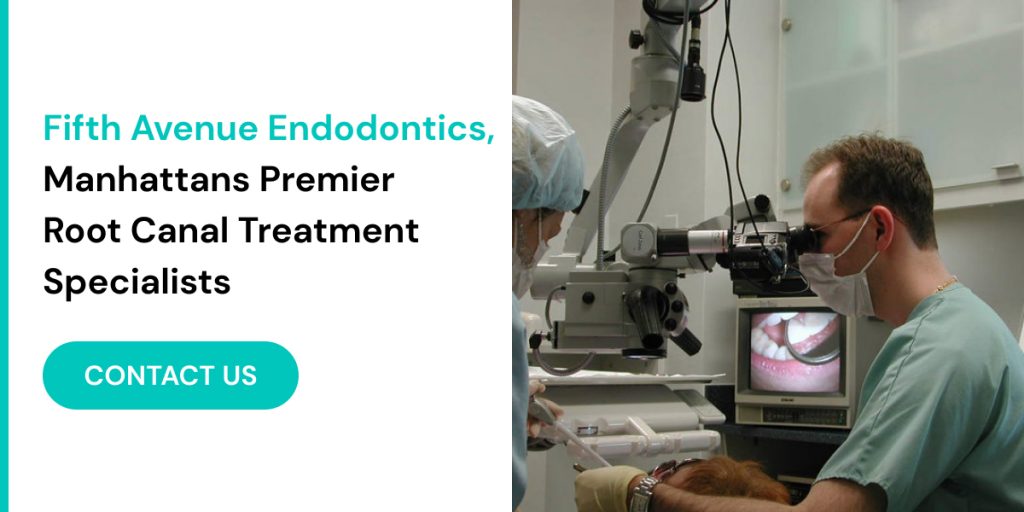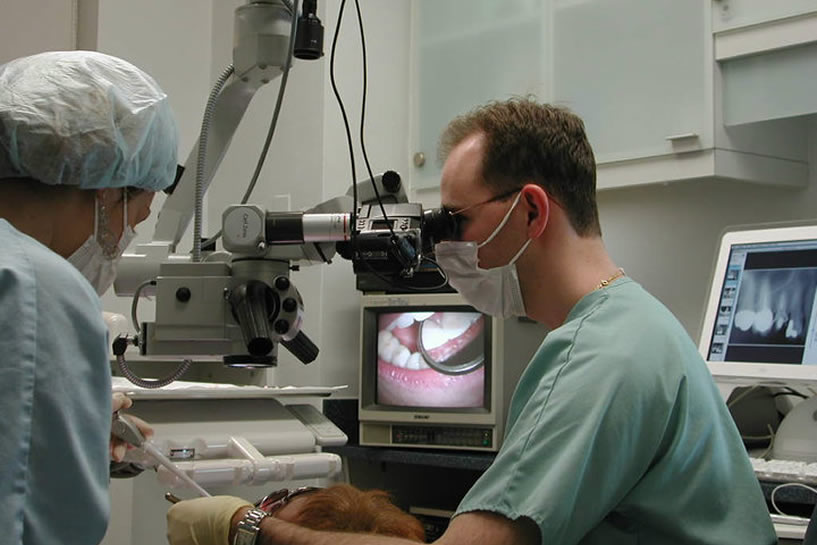Root canal therapy is often surrounded by misconceptions that can cause unnecessary fear and anxiety. In this post, we address and debunk some of the most common myths about root canals with insights from the best endodontist in NYC, including the expertise of Fifth Avenue Endodontics and Dr. Ilya Iofin.
Myth 1: Root Canals Are Painful
Many people believe that root canal therapy is extremely painful. However, this is a myth. With modern anesthesia and advanced techniques, the procedure is no more painful than getting a filling. Dr. Iofin at Fifth Avenue Endodontics ensures that patients are comfortable and pain-free throughout the treatment.
In the past, root canals were indeed more painful because the available anesthesia was not as effective. However, dental technology and methods have advanced significantly over the years. Today, endodontists like Dr. Iofin use local anesthetics that numb the area completely, ensuring that patients do not feel pain during the procedure. Post-procedure discomfort can usually be managed with over-the-counter pain relievers and typically subsides within a few days.
Additionally, the fear of pain often stems from the pain of the infected tooth prior to the treatment. Root canals are performed to relieve this pain caused by infection or inflammation in the tooth’s pulp. Once the infected pulp is removed and the inside of the tooth is cleaned and sealed, patients often feel immediate relief from the intense pain they experienced before the procedure.
Myth 2: Root Canals Cause Illness
There is a persistent myth that root canals can cause illness or systemic disease. This misconception originated from outdated research that has since been debunked. The American Association of Endodontists (AAE) confirms that root canal treatments are safe and effective, and there is no evidence linking them to systemic health issues.
The myth dates back to the early 20th century when Dr. Weston A. Price conducted flawed research that suggested a link between root canal-treated teeth and systemic illnesses like arthritis and heart disease. Modern research has thoroughly debunked these claims. Comprehensive studies have shown that root canal therapy is a safe and effective method for treating infected teeth and preventing the spread of infection.
Endodontic treatment by specialists such as those at Fifth Avenue Endodontics actually removes the source of infection from the tooth, reducing the risk of the bacteria spreading to other parts of the body. The rigorous sterilization techniques used during root canal procedures also ensure that the treated tooth is free from harmful bacteria.
Myth 3: Tooth Extraction is Better Than a Root Canal
Some believe that extracting a tooth is a better option than undergoing root canal therapy. In reality, saving your natural tooth with a root canal has several advantages. It maintains your natural bite, prevents other teeth from shifting, and helps preserve the jawbone. The expert team at Fifth Avenue Endodontics, including Dr. Iofin, can help you understand the benefits of saving your tooth.
Tooth extraction may seem like a quick and easy solution, but it can lead to long-term dental issues. When a tooth is extracted, the surrounding teeth may shift, leading to misalignment and bite problems. Additionally, missing teeth can cause the jawbone to deteriorate over time due to lack of stimulation, which can change the shape of your face and lead to further dental complications.
A root canal, on the other hand, preserves the natural tooth and its roots, maintaining the integrity of your jawbone and oral structure. The procedure removes the infected pulp and seals the tooth, allowing you to retain your natural tooth function and appearance.
Replacing an extracted tooth with a dental implant, bridge, or denture can be more invasive and costly than a root canal. Therefore, preserving your natural tooth with a root canal is often the best option for long-term dental health.
Myth 4: Root Canals Require Multiple Visits
While some complex cases might need more than one visit, many root canals can be completed in a single appointment. Advances in endodontic techniques and technologies have made it possible to perform efficient and effective treatments in less time. Fifth Avenue Endodontics utilizes state-of-the-art technology to streamline the process.
In the past, root canal procedures often required multiple visits to complete due to the limitations of dental technology and the need for extensive cleaning and shaping of the root canals. However, modern advancements have streamlined the process significantly. High-powered microscopes, digital imaging, and rotary instruments allow endodontists to perform root canals with greater precision and efficiency.
For many straightforward cases, the entire procedure can be completed in a single visit, lasting about 60 to 90 minutes. During this time, the endodontist will remove the infected pulp, clean and shape the root canals, and fill and seal the tooth. In cases where the infection is severe or there are complications, a second visit may be necessary to ensure the tooth is thoroughly cleaned and properly sealed.
Myth 5: Root Canals Don’t Last
When performed correctly by a skilled endodontist, a root canal-treated tooth can last a lifetime. Fifth Avenue Endodontics and Dr. Iofin use high-quality materials and techniques to ensure the longevity of the treatment.
One common concern is that a root canal-treated tooth is more likely to fail or require additional treatment. However, with proper care, such as good oral hygiene and regular dental check-ups, a tooth that has undergone root canal therapy can last as long as your natural teeth. Advances in endodontic techniques, including the use of biocompatible materials and effective sealing methods, have greatly improved the success rates of root canal treatments.
Additionally, the placement of a well-fitted crown after the root canal procedure can protect the tooth from fracture and further decay, ensuring its longevity. Crowns are designed to provide strength and durability, making the treated tooth functional and aesthetically pleasing.
Myth 6: Root Canals Kill the Tooth
A root canal does remove the infected or inflamed pulp, but it doesn’t kill the tooth. The tooth remains alive because it still receives nutrients from the surrounding tissues and bone.
The misconception that a root canal kills the tooth likely arises from a misunderstanding of the procedure. During a root canal, the infected or damaged pulp is removed from the interior of the tooth, and the empty space is cleaned, shaped, and filled with a biocompatible material. This procedure eliminates the source of infection and pain but does not affect the external structure of the tooth or its surrounding tissues.
The tooth continues to function normally because the surrounding periodontal ligament and bone still provide the necessary support and nutrients. The treated tooth can perform all the same functions as any other tooth, such as chewing and biting, without any issues.

The Evolution of Root Canal Therapy
The field of endodontics, which focuses on root canal therapy and other treatments of the dental pulp, has evolved dramatically over the years. From the early days of rudimentary tools and limited pain management to today’s sophisticated techniques and technologies, the advancements in endodontics have made root canal therapy a highly effective and routine procedure.
Historical Perspective
In the early 20th century, root canal therapy was a rudimentary and often painful procedure. Limited anesthetics meant that patients experienced significant discomfort, and the tools used were not as precise or effective as those available today. The primary goal was to remove the infected pulp and alleviate pain, but the success rates were lower due to the lack of advanced techniques and materials.
Modern Techniques and Technologies
Today’s endodontists, like Dr. Iofin, benefit from a wide range of technological advancements that have transformed root canal therapy into a precise and predictable procedure. These innovations have not only enhanced the accuracy of treatments but also improved patient comfort and outcomes. Here are some of the cutting-edge technologies and techniques used in modern endodontics:
- Digital Imaging: Digital X-rays and 3D cone beam computed tomography (CBCT) provide detailed images of the tooth’s internal structures, allowing for accurate diagnosis and treatment planning. Digital X-rays offer high-resolution images with significantly reduced radiation exposure compared to traditional film X-rays. CBCT scans provide a comprehensive three-dimensional view of the tooth and surrounding tissues, which is invaluable for assessing complex cases, identifying hidden canals, and planning precise interventions.
- Operating Microscopes: High-powered microscopes give endodontists a magnified view of the tooth’s interior, enabling them to see and treat even the smallest root canals and complex anatomy. The enhanced visibility allows for meticulous cleaning, shaping, and filling of the canals, increasing the success rate of the procedure. These microscopes are particularly useful for detecting tiny fractures, residual pulp tissue, and intricate canal structures that could be missed with the naked eye.
- Rotary Instruments: These electric-powered tools allow for more efficient and thorough cleaning and shaping of the root canals compared to traditional hand files. Rotary instruments, made from flexible nickel-titanium, can navigate the curved and narrow canals with ease, reducing the risk of procedural errors and enhancing the effectiveness of the treatment. The use of rotary instruments also shortens the duration of the procedure, making it more comfortable for patients.
- Ultrasonics: Ultrasonic devices help remove debris and bacteria from the root canals, ensuring a cleaner and more effective treatment. Ultrasonic tips vibrate at high frequencies, generating energy that assists in dislodging and flushing out infected tissue and contaminants. This technology is particularly effective in cleaning areas that are difficult to reach with traditional instruments, such as isthmuses and lateral canals.
- Biocompatible Materials: Advanced filling materials, such as gutta-percha and bioceramics, provide excellent sealing properties, reducing the risk of reinfection. Gutta-percha, a natural latex-based material, is commonly used to fill the cleaned and shaped canals due to its flexibility and compatibility with the tooth structure. Bioceramics, known for their superior sealing abilities and biocompatibility, promote healing and reduce inflammation, offering long-term stability and success.
- Electronic Apex Locators: These devices accurately determine the length of the root canal, ensuring that the entire canal is thoroughly cleaned and filled. By providing real-time measurements, electronic apex locators enhance the precision of the procedure, reducing the likelihood of incomplete treatment and subsequent complications.
- Thermal Obturators: These devices use heat to soften the filling material, allowing it to flow and adapt perfectly to the canal walls. This technique ensures a homogenous and dense fill, which is crucial for preventing bacterial leakage and promoting long-term success.
The integration of these modern techniques and technologies has revolutionized endodontic practice, making root canal therapy more efficient, reliable, and comfortable for patients. By leveraging these advancements, today’s endodontists, including Dr. Iofin at Fifth Avenue Endodontics, can provide superior care that not only addresses the immediate dental issue but also ensures the long-term health and functionality of the treated tooth. The result is a higher standard of dental care that enhances patient outcomes and satisfaction, maintaining the natural tooth and contributing to overall oral health.
Pain Management and Patient Comfort
One of the most significant advancements in root canal therapy is the improvement in pain management techniques. Local anesthetics, such as lidocaine, effectively numb the area around the tooth, ensuring that patients do not feel pain during the procedure. Additionally, sedation options, such as nitrous oxide (laughing gas) or oral sedatives, are available for patients who experience anxiety or fear about dental treatments.
Endodontists also take great care to ensure patient comfort throughout the procedure. Modern dental chairs, ergonomic tools, and a calm and reassuring environment contribute to a positive experience for patients undergoing root canal therapy.
The Role of the Endodontist
Endodontists are dental specialists who focus on diagnosing and treating issues related to the dental pulp and root tissues. They undergo additional training beyond dental school to become experts in root canal therapy and other endodontic procedures. The best endodontist in NYC combines extensive knowledge, advanced skills, and a compassionate approach to provide the highest level of care for patients. At Fifth Avenue Endodontics, Dr. Iofin exemplifies this combination of expertise and empathy.
Specialized Training
After completing dental school, endodontists undergo an additional two to three years of specialized training in endodontics. This advanced education includes in-depth study of the anatomy, physiology, and pathology of the dental pulp and surrounding tissues. Endodontists learn to perform complex root canal treatments, retreatments, and surgical procedures, such as apicoectomies (removal of the tip of the tooth root).
Expertise in Complex Cases
Endodontists are often called upon to handle complex cases that general dentists may not be equipped to manage. These cases may involve teeth with unusual or challenging anatomy, severe infections, or previous root canal treatments that have failed. The expertise of an endodontist ensures that even the most difficult cases are treated with precision and care.
Commitment to Continuing Education
The field of endodontics is constantly evolving, with new techniques, materials, and technologies being developed. The best endodontist in NYC, such as Dr. Iofin, is committed to staying up-to-date with the latest advancements in the field through continuing education and professional development. This dedication to lifelong learning ensures that patients receive the most advanced and effective treatments available.
Maintaining Oral Health After a Root Canal
A successful root canal treatment not only alleviates pain and saves your natural tooth but also sets the stage for long-term oral health. However, maintaining the health of your treated tooth and overall dental well-being requires ongoing care and attention.
Good Oral Hygiene Practices
Maintaining good oral hygiene is crucial for the longevity of a root canal-treated tooth. Here are some key practices to follow:
- Brush Twice a Day: Use a soft-bristled toothbrush and fluoride toothpaste to brush your teeth at least twice a day. Pay special attention to the area around the treated tooth to prevent plaque buildup.
- Floss Daily: Flossing helps remove food particles and plaque from between your teeth and along the gumline. Be gentle when flossing around the treated tooth to avoid irritation.
- Rinse with Mouthwash: Using an antimicrobial mouthwash can help reduce bacteria in your mouth and maintain overall oral health.
Regular Dental Check-Ups
Regular dental check-ups and cleanings are essential for monitoring the health of your root canal-treated tooth and preventing future dental issues. During these visits, your dentist will:
- Examine the Treated Tooth: Your dentist will check for any signs of infection, damage, or other issues with the treated tooth.
- Perform Professional Cleanings: Professional cleanings remove plaque and tartar buildup that cannot be removed through regular brushing and flossing.
- Monitor Overall Oral Health: Regular check-ups allow your dentist to identify and address any potential dental problems early, ensuring that your entire mouth remains healthy.
Protecting Your Teeth
To prevent damage to your root canal-treated tooth and other teeth, consider the following protective measures:
- Avoid Hard Foods: Chewing on hard foods, such as ice, hard candies, and nuts, can cause the treated tooth to crack or break. Be mindful of what you eat to protect your teeth.
- Wear a Mouthguard: If you play contact sports or grind your teeth at night, wearing a mouthguard can help protect your teeth from injury and wear.
Conclusion
Understanding the facts about root canal therapy can alleviate fear and help you make informed decisions about your dental health. The team at Fifth Avenue Endodontics, led by Dr. Iofin, is dedicated to providing accurate information and high-quality care, ensuring you receive the best possible treatment for your needs. By debunking common myths and emphasizing the importance of preserving your natural teeth, we hope to empower you to take control of your oral health and maintain a beautiful, healthy smile for years to come.

